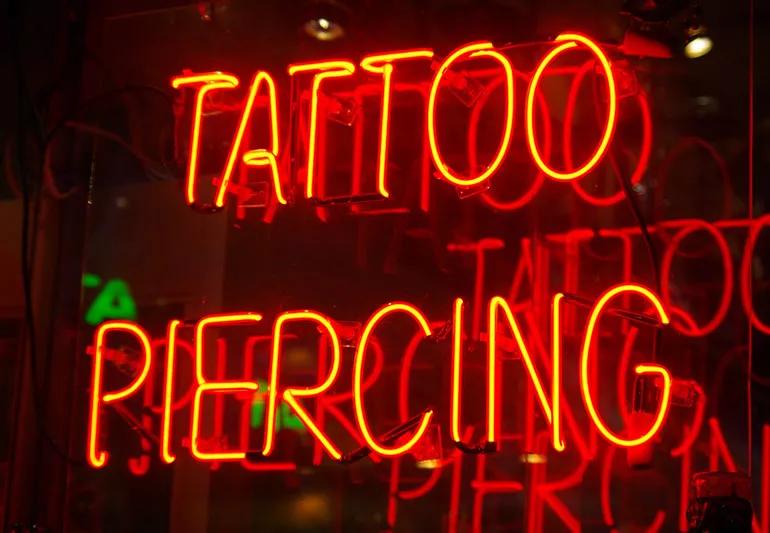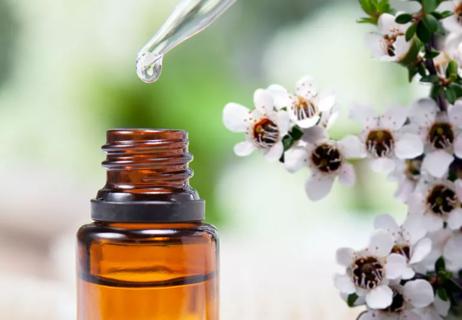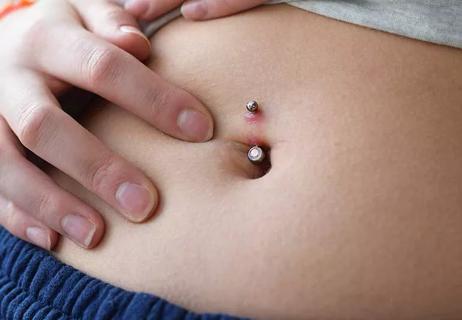Understand the risks and take precautions against infection

There’s no limit to the creative ways people choose to adorn their bodies. Anywhere there’s a flap of skin can be a target for a piercing. We pierce our ears, noses, tongues, belly buttons and even our … ahem … private parts.
Advertisement
Cleveland Clinic is a non-profit academic medical center. Advertising on our site helps support our mission. We do not endorse non-Cleveland Clinic products or services. Policy
How you choose to express yourself through body art is your choice. But know that when you decide to pierce your penis or scrotum, you could put yourself at risk for potentially serious issues, like decreased sexual function, trouble urinating and infections.
Urologist Ryan Berglund, MD, explains the risks involved in piercing your member and provides some advice for avoiding infection.
When we’re talking about penis piercings, we’re talking about any piercing in the male genitals — including blinging out your penis, foreskin, scrotum and more.
Penis piercings are usually a personal choice. People tend to get them for aesthetic reasons or because they expect them to lead to greater sexual gratification for themselves or their partner. Depending on the placement of the piercing and personal preference, different styles of jewelry can be used in a penis piercing — including hoops, straight barbells, bent barbells, circular barbells and more.
And while it may sound like an “all the cool kids are doing it” trend, dressing up your penis isn’t a new idea at all.
European artistic depictions of pierced and tattooed penises date back at least 11,000 years.
Additionally, the Kama Sutra describes the practice of “pearling,” in which glass beads are inserted into a penis to enhance sexual pleasure.
Advertisement
And legend has it that Prince Albert, who was married to Queen Victoria of the United Kingdom in the 1800s, rocked an intimate piercing. As the story goes, he would attach his penis ring to one leg of his pants to conceal his bulge while wearing tight-fitting trousers.
There are a lot of different ways to “put a ring on it.” It seems the placement of penis piercings is limited only by your imagination.
To start: A quick vocabulary review on the anatomy of the penis:
Just about every square inch of your penis and scrotum could become a destination for some jewelry.
For example, one popular (yet particularly risky) piercing is called the Prince Albert. That’s a piercing that enters your urethra and comes out of your glans. Fans of the Prince Albert piercing claim it heightens pleasure during sex for both the person who’s pierced and their partner.
The Prince Albert may be the best-known penis piercing, but there are more than a dozen other ways to adorn your genitals.
Some people pierce their shaft, either through a pinch of skin on one side, or straight through from one side to the other. They pierce the base of their penis and various places on their scrotum, glans and foreskin. Piercings can go horizontally or vertically.
In short, if you want to pierce any particular part of your genitals, you probably could. Though it may not be advisable.
Genital piercings can have a reputation for being cool, sexy and dangerous in an appealing kind of way. But they can easily go from dangerously sexy to straight-up dangerous. Dr. Berglund explains the not-so-hot risks.
Your penis is a hotbed of nerve endings. They’re what make sex pleasurable. But with piercings, nerve damage is a real possibility. And it can have a long-term impact on your sex life.
“If you compromise the nerves of the penis, it can lead to problems,” Dr. Berglund says. “One is erectile dysfunction. The other is the potential for either penile pain, or penile anesthesia — a complete lack of sensation.”
Probably not the vibe you’re going for.
Piercings that go only through skin, not through the shaft or into your urethra, may carry less risk for severe nerve damage.
Advertisement
Penis piercings can create other anatomical problems as well, including making it more difficult to pee.
“The Prince Albert, in particular, can cause structural issues because the piercing goes through the urethra,” Dr. Berglund explains. “It can create an abnormal connection between the urethra and the outside of the penis, called a fistula.”
That can make your urine spray instead of stream and can lead to infection.
Condoms are the only contraception that will protect you and your partner from sexually transmitted infections (STIs or STDs) during sex.
But penis piercings are often in places that are covered with a condom. So, a piercing on your foreskin, glans or shaft can cause the condom to break. That leaves you and your partner vulnerable to sexually transmitted infections (and pregnancy, in the case of vaginal sex).
Removing genital jewelry during sex will fix that problem. And opting for a piercing at the base of your penis or on your scrotum is less likely to cause condom malfunctions.
Some people have an allergic reaction or sensitivity to different metals used in jewelry. The most common culprit is nickel. Nickel sensitivity can make the skin around your piercing:
Advertisement
Sensitivity to metal in an earring can be annoying enough. But nickel allergy in your pants? Ugh.
Dr. Berglund suggests choosing nickel-free, hypoallergenic materials, like surgical titanium or a high-karat yellow gold. White gold is likely to contain higher levels of nickel than yellow gold. And some stainless steel and sterling silver jewelry can contain nickel in high enough concentrations for some people to have a reaction.
If you choose to pierce your penis, you’ll want to take some precautions to ensure it heals well and to avoid infection. Dr. Berglund offers these tips:
This isn’t the time to DIY or trust a friend with a sewing needle. Do your research and only go to a professional piercer who practices highly sanitary procedures.
You’ll probably leave the piercer rocking a bandage down under. You’ll want to continue to keep your new piercing covered, changing the bandage at least once a day to keep it clean and dry. Wearing tighter-fitting underwear will help keep the bandage in place and keep it from rubbing uncomfortably.
And we mean wash really well — but also treat it gently. You want to keep that piercing clean but also be careful not to pull or tug on it.
In addition to showering (no baths or pools for now), clean your piercing at least twice a day with a mixture of salt and water. Use six parts water to one part salt. You can either soak your piercing in the mix for a few minutes by putting it in a bowl or cup. Or use a clean cloth or gauze to clean up.
Advertisement
Dry your piercing with a paper towel (not your germ-infested bathroom towels). Only touch your piercing with freshly washed hands.
No nookie while you’re healing. That includes vaginal sex, anal sex, receiving oral sex and masturbating. Keeping your new piercing free from others’ germs and reducing friction will promote healing and help you avoid infection.
Some piercings may take three months or more to fully heal.
Inside your pants is a dark, damp, warm environment — just the kind of place where germs love to multiply. Those germs can easily make their way to your new piercing and cause infection. Signs to watch out for include:
If you’re having trouble maintaining an erection or showing signs of infection after a piercing, talk to a doctor for advice.
Learn more about our editorial process.
Advertisement

Earlobe piercings heal quicker and are less painful than cartilage piercings — proper cleaning and care are important

Soap, water and an antibiotic ointment are your best bet

It isn’t risk free and shouldn’t replace the aftercare recommended by your piercer

Twice-a-day cleaning with a saltwater solution can help you resolve (and avoid) problems

A dermatologist explains why it happens and how to address it

‘Morning wood’ is a natural bodily function and a sign of sexual health

Yes, new fathers can experience mood changes after bringing baby home

Getting stronger, feeling better and staying active isn’t just possible — it’s doable

If you’re feeling short of breath, sleep can be tough — propping yourself up or sleeping on your side may help

If you fear the unknown or find yourself needing reassurance often, you may identify with this attachment style

If you’re looking to boost your gut health, it’s better to get fiber from whole foods